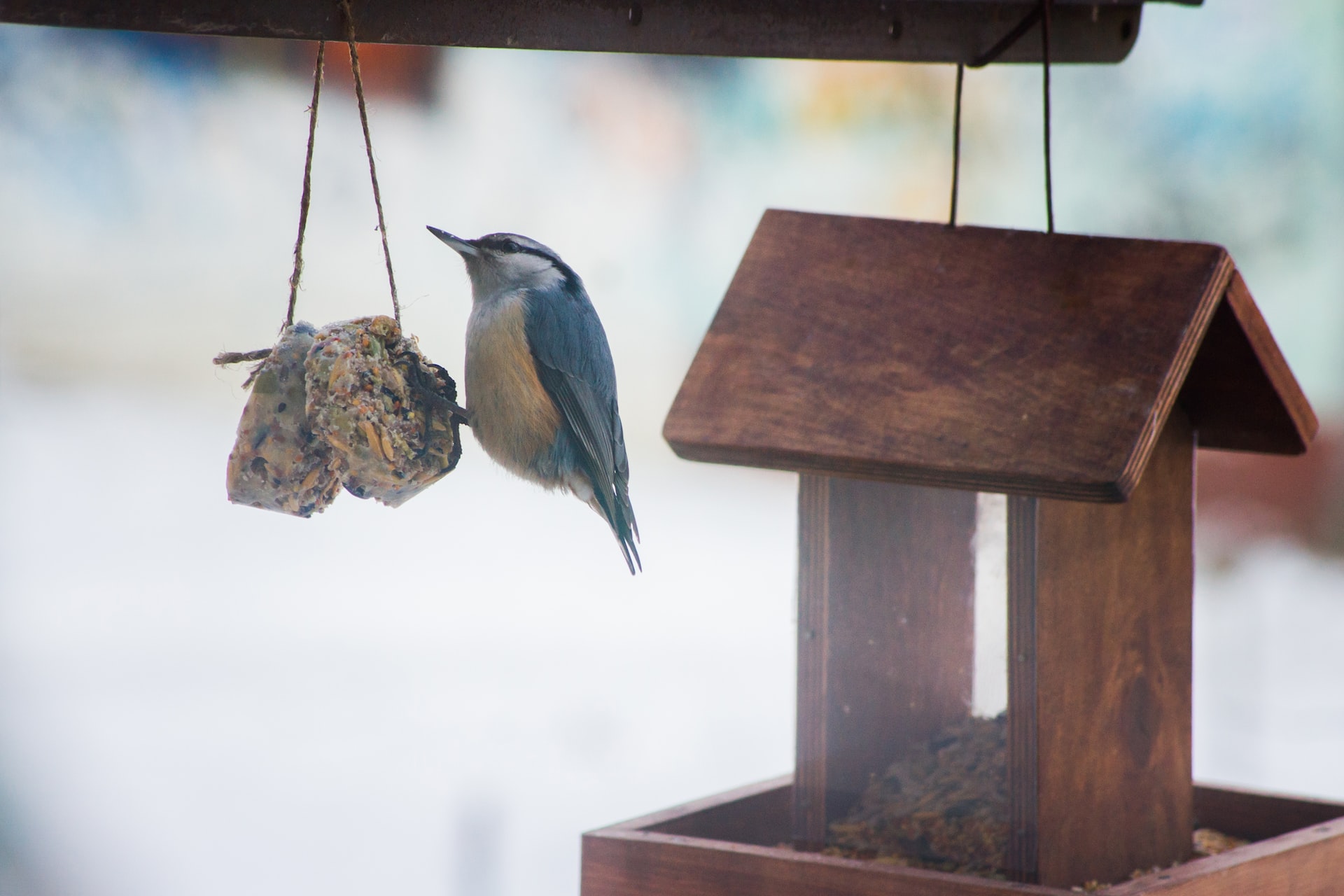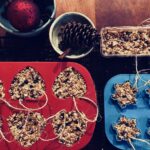Setting up a feeder is a great way to support backyard birds. It also provides the opportunity to identify native and migratory species that visit your area during spring and fall migration. I particularly like to mix this No-Lard Bird Suet recipe for hanging outdoors in the cold weather.
Feeding Backyard Birds
Most birds rely on wild foods for the bulk of their meals. Feeders benefit birds most during winter when natural food supplies are scarce. The Audubon Society reports more than 100 North American species supplement their diets with seed, fruit, nectar, or suet obtained from feeders. This is why I like to hang No-Lard Bird Suet during times when wild, natural foods are in short supply.
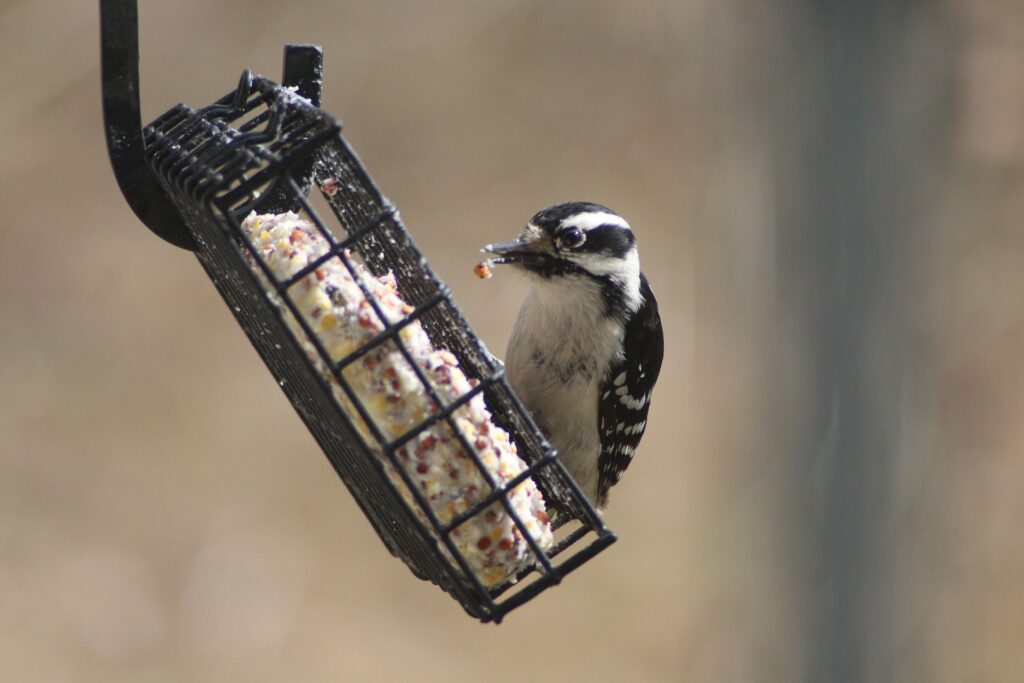
Why Feed Homemade No-Lard Bird Suet?
Homemade suet is an excellent choice for cold weather feeding. The fat base makes it a high-energy food that is especially valuable in cold weather. Suet is also high in protein. Depending on the mix, it can provide extra nutrients and minerals for backyard birds as well.
Traditional suet recipes have an animal fat base (lard). I don’t stock lard in my kitchen, so I based my mix on an Audubon recipe made with vegetable shortening. I’ve had great success, and haven’t found any reason to stray from it. This recipe is easy to mix, shape and store.
I am adding an addition to this post about storing these suet cakes in a suet feeder. I recently learned if birds cling directly to soft fats such as peanut butter or shortening, the oils can stick to their feet. When grooming, these oils may transfer to their feathers, compromising their ability to stay clean and warm—a dangerous situation during freezing temperatures.
To prevent this, simply place this suet cake recipe inside a suet cage. This small adjustment ensures that birds can enjoy their winter treat safely, without the risk of harm. This is an easy, effective, and thoughtful way to provide wild birds with much-needed energy while keeping their health a top priority.
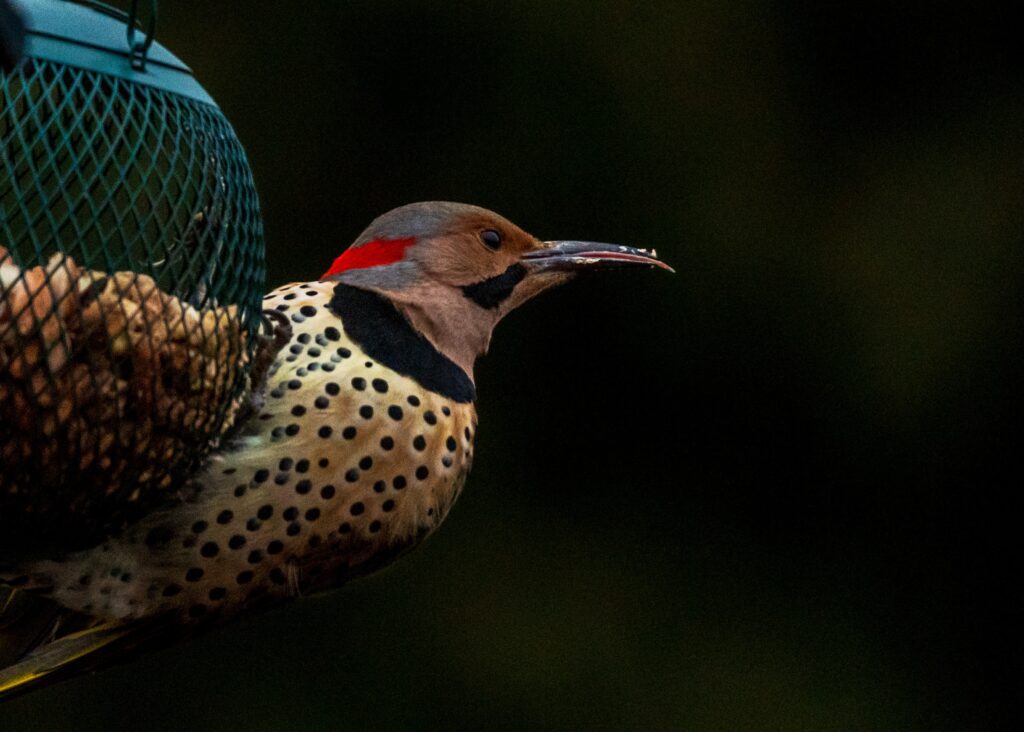
How To Make Homemade Suet Mix
In a large bowl, stir together 1 cup of rolled oats, 1/2 cup of cornmeal, 3 1/2 cups of wild bird seed and a handful of dried fruit (cranberries and/or blueberries are great).
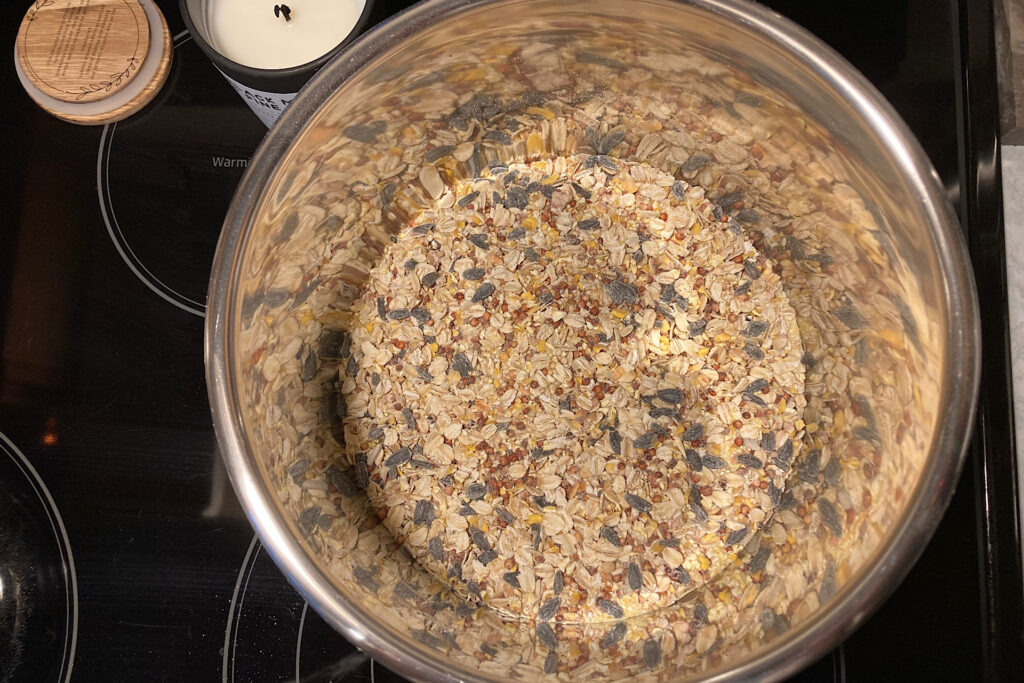
Meanwhile, in a small saucepan on top of the stove, melt 3/4 cup of peanut butter and 1 1/2 cups of vegetable shortening over low heat.

Once the peanut butter and shortening melt, pour the liquid over the dry ingredients. Mix well and spoon into containers.
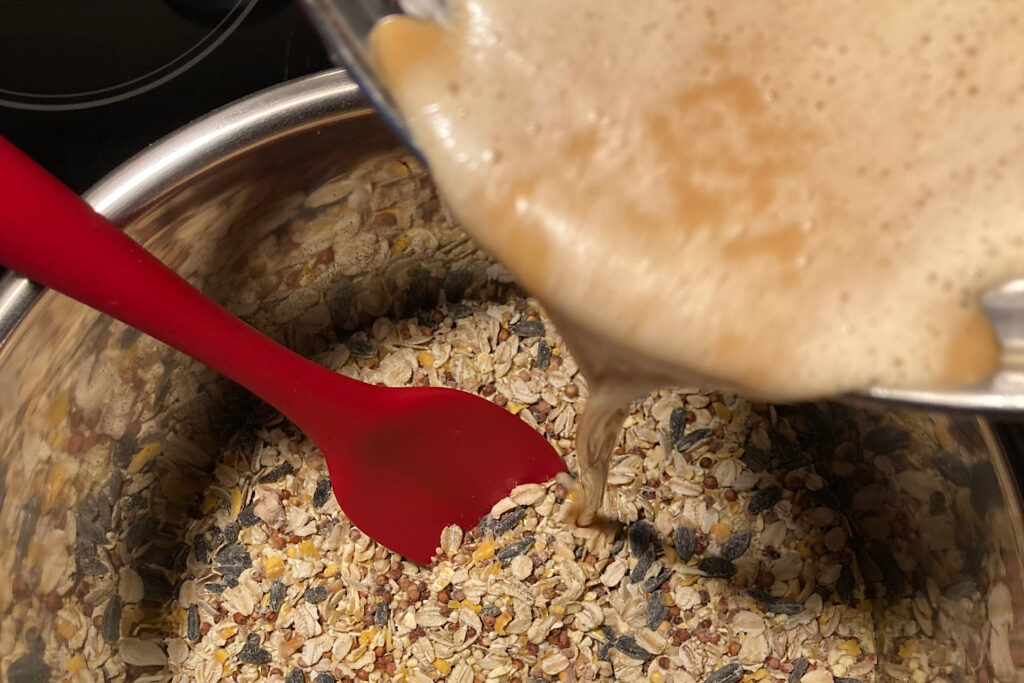

How To Shape, Hang, and Store Homemade Suet Cakes
You will now scoop the mixture into containers. I have had good luck with silicon molds used for baking and soap making. I have also recycled the shortening bar containers and used them as molds. Be careful with the bar containers though – if the mixture is too hot, the container may start to melt too. If you want to use shortening containers, allow the mixture cool a bit before spooning it into them.
After filling the molds, I inserted loops of twine into the mixture so I could hang them. If you already own a suet cage, you do not have to insert hangers. You can also recycle mesh onion bags to hang your suet cakes.
Put the molds in the freezer overnight or until the mixture is solid. Leave them in the freezer until needed. Or, once hardened, you can pop the No-Lard Bird Suet Cakes out of their molds and store them in the freezer in the container of your choice.
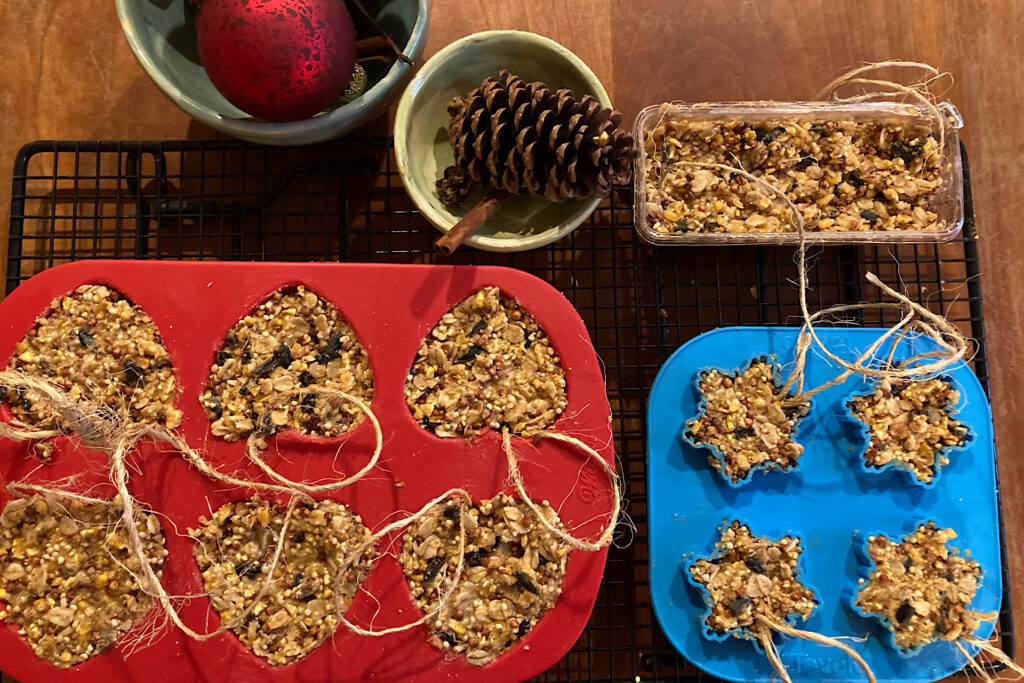
What Bird Species Will Be Attracted to No-Lard Bird Suet?
Once hung outside, it won’t take long for birds to show up at your feeder. Suet will attract insect-eating species such as woodpeckers, chickadees, nuthatches, and titmice.
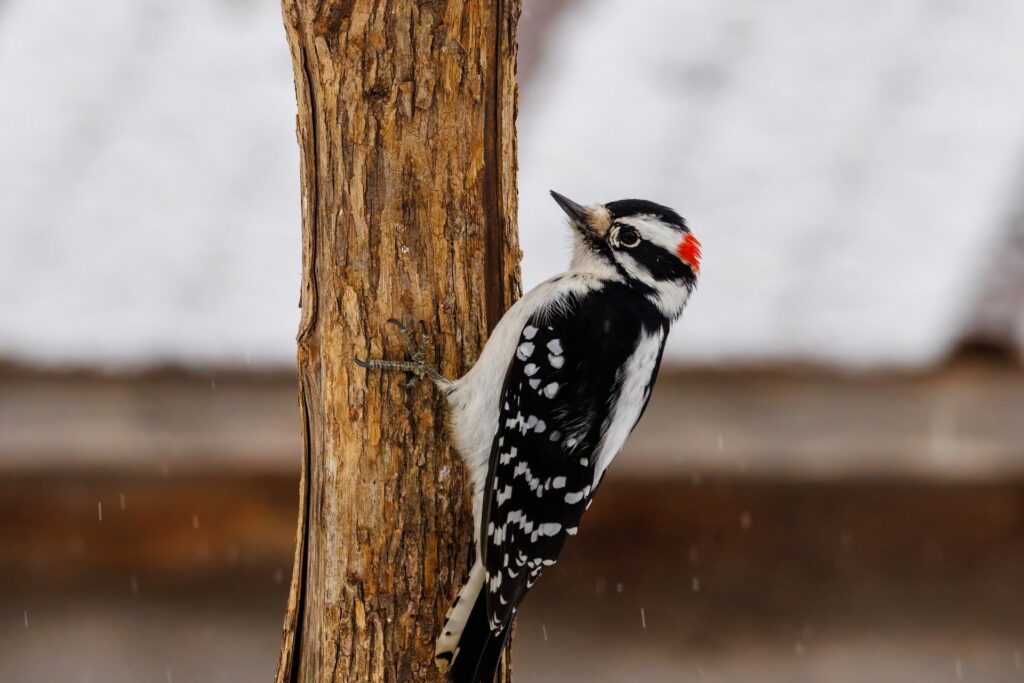
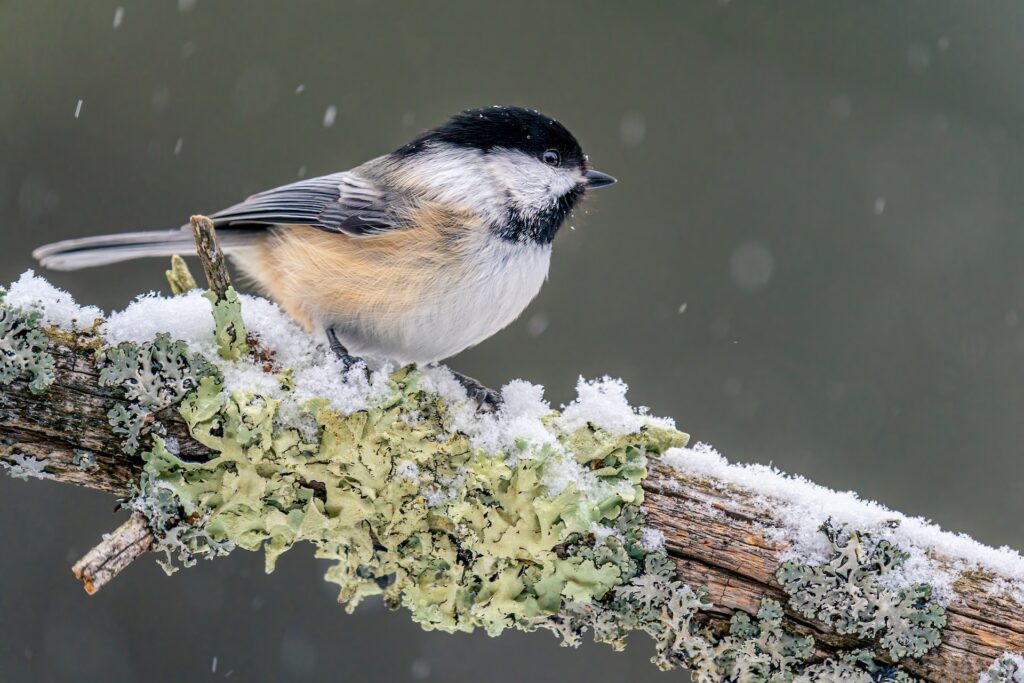
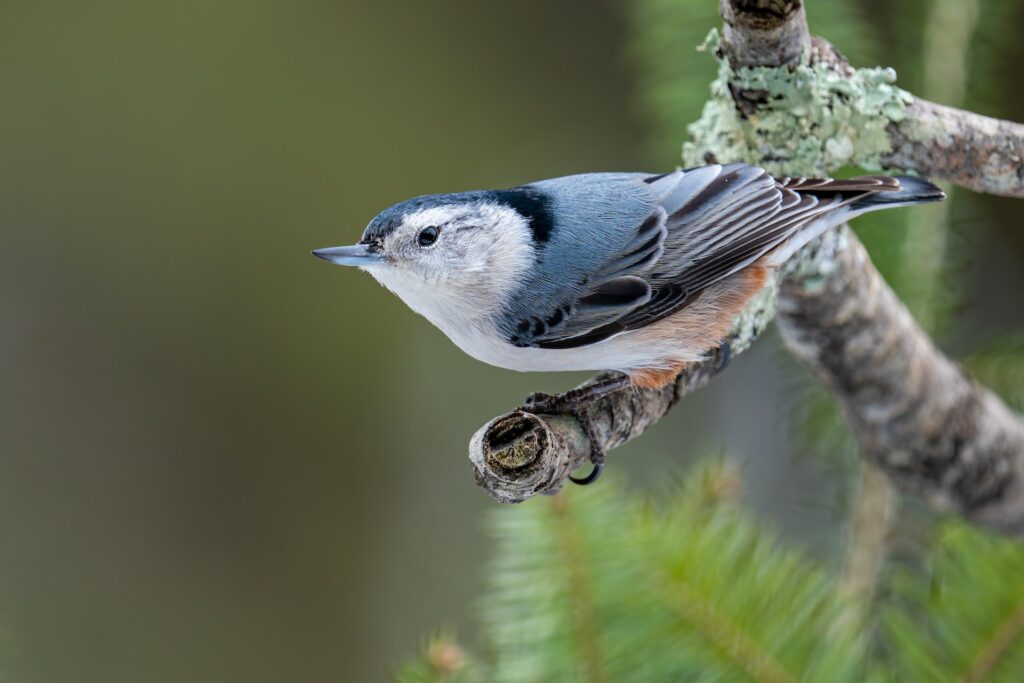
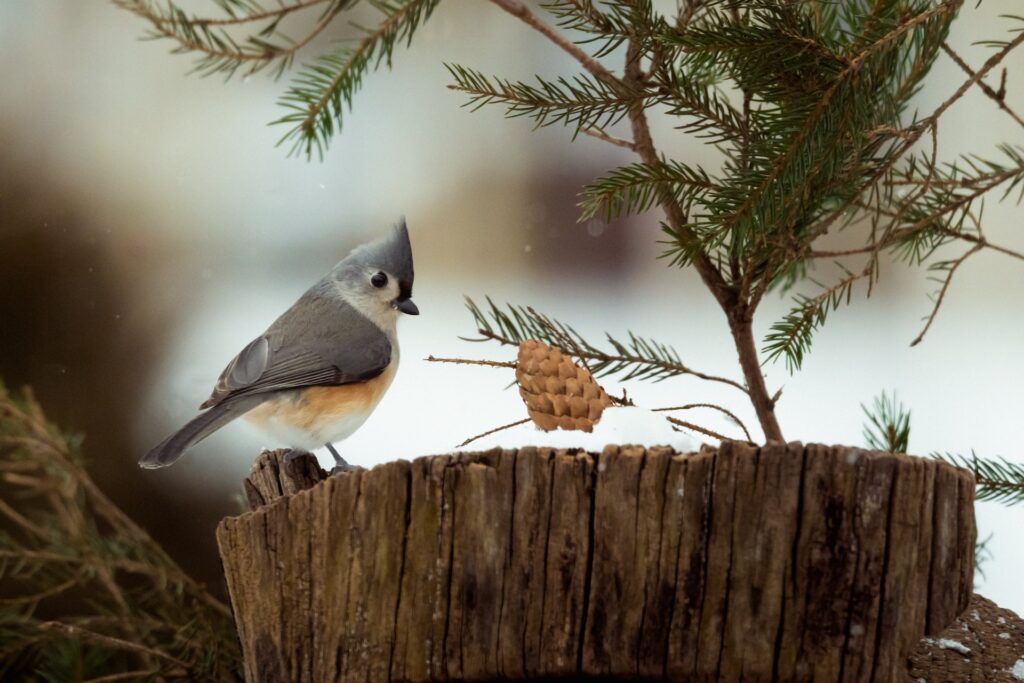
Make sure not to hang your suet cakes too close to windows to avoid any collisions. Its also fair to note here that squirrels also love this recipe, and the mixture doesn’t hold up well in warmer weather. I hang it during cold weather months only. I live in the Northeast, so I don’t feed birds until the black bear are hibernating. I take feeders down before the bear emerge again in the spring. Again, I now advise placing these cakes in a suet feeder for best results.
Additional Resouces:
If you are like me and are curious about which bird species are visiting your feeders or are interested in more information on bird feeding in general, I’ll share a few resources I found helpful.
(Disclosure: Late Bloomer in Bakerville is a participant in the Amazon Services LLC Associate Program, an affiliate advertising program designed to provide a way for websites to earn advertising revenues by advertising and linking to Amazon.com)
This guide is very helpful when trying to identify a bird that visits my feeders. The illustrations are great. The guide also provides range maps and information on voice, habitat and similar species.
- Peterson Field Guide to Birds of the Eastern and Central North America (seventh edition).
- The Cornell Lab Merlin Bird ID App
- Audubon Tips for Feeding Backyard Birds
More Home DIY:

Bird Suet - No Lard
Equipment
- Plastic or silicone containers to serve as molds
Materials
- 1 1/2 cups vegetable shortening
- 3/4 cup peanut butter
- 1 cup rolled oats
- 1/2 cup cornmeal
- 3 1/2 cups wild bird seed
- 1 handful dried fruit (cranberries, raisins)
Instructions
- Mix dry ingredients in a glass or metal bowl.
- Melt shortening and peanut butter in a saucepan on the stove.
- Pour melted shortening and peanut butter over dry mixture.
- Stir with spoon until well combined.
- Scoop warm mixture into plastic or silicone molds. Tuck in twine if you would like to hang them from their own loops or leave as is if planning to insert them into a suet cage. Freeze overnight. Remove from containers and hang outdoors.
